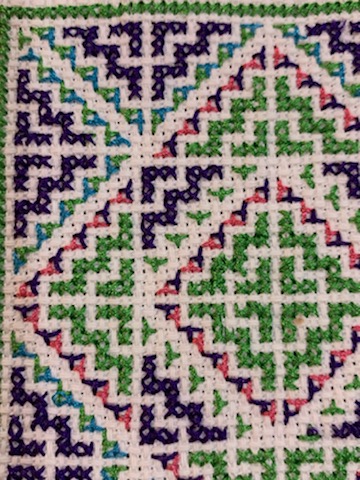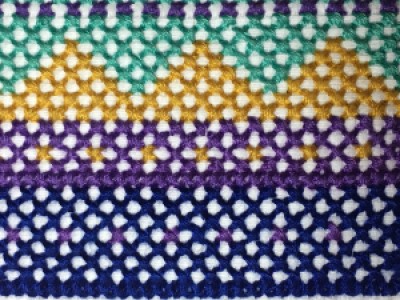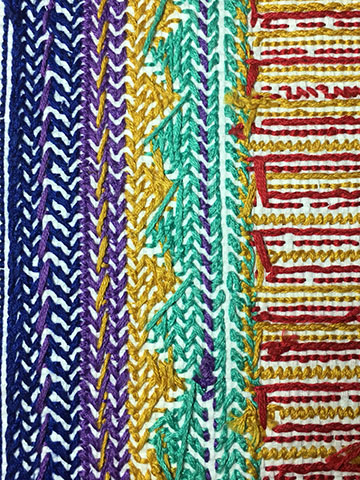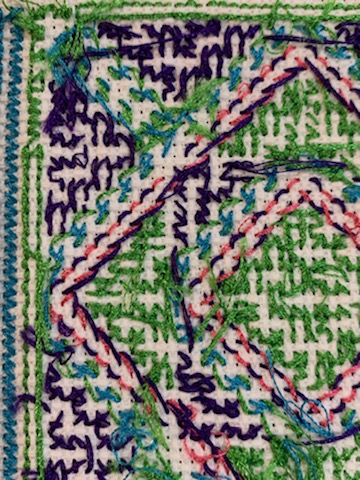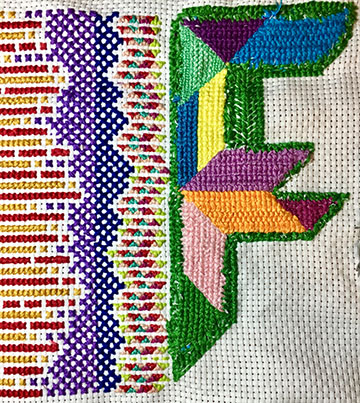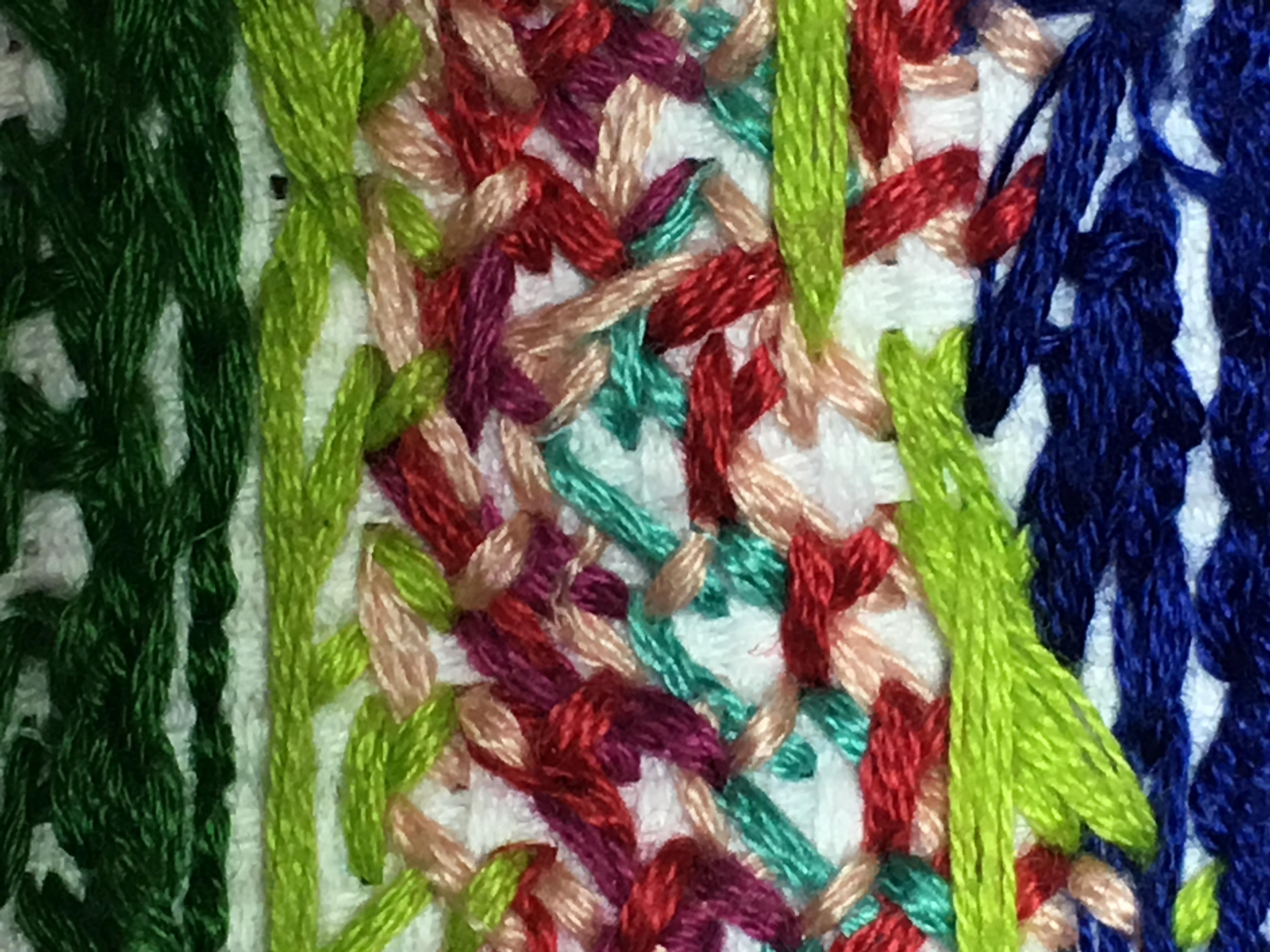Dataweaving: Textiles as
Data Materialization
by Krystin Gollihue &
Mai Nou Xiong-Gum
Data, like writing, is composed through shapes, signs, and symbols; it needs both a reader and a writer to understand the language and make it meaningful. Some of data’s most recognizable forms articulate themselves as graphs, T-graphs, line graphs, bar graphs, and scatter plots—or via more sophisticated methods of visualizing data through software such as Tableau or Gephi—all of which are inscriptions about information materializing on a surface.
In this manifesto, we argue that textiles are another form of data visualization. Textiles serve as a medium for storing, connecting, and coding data, but the practice of encoding information onto textiles through “craft” is a practice that comes steeped in histories of technology, privilege, and erasure.
Beyond this, textiles have the affordance of materializing data—whereby traces of its process of becoming find themselves onto the visualization and into the data—requiring the reader/writer to practice what Richard Lanham (1993) called looking “through and at” the composition. Thus, data constitutes accessible and decipherable meaningfulness. This manifesto’s theoretical framework is informed by Angela Haas’s (2007) “Wampum as Hypertext” and Annette Markham’s (2013) “Undermining ‘Data.’” Our conversation is contextualized by Lev Manovich’s (2001) The Language of New Media, Janet Murray’s (2011) Inventing the Medium, and the desire to understand how an attention to materiality might shift our thinking of data visualizations off screen.
In this manifesto, we offer stories, images, videos, a theoretical framework, discussion points, and thoughts about what is at stake when we talk about data visualization. We want to consider how digital rhetoric and media studies, in relatively recent conversations about data visualization, have relied on strictly new media understandings of data, despite evidence that there is data being gathered through made objects such as cloth, blankets, quilts, and textile makings. We focus here on textiles as they hold special meaning in our lives as data centers, but also because of the ways they prompt interaction and reciprocity. The etymology of the word textile has special meaning in the study of rhetoric, the fabric we weave of meaning. The root of the word cloth implies something more: that there is a world of meaning that we should wrap around ourselves. When we focus so intently on the visualization of data, what weaving, what wrapping gets obscured? If “new” media and “old” media afford us similar experiences, how might we think of data instead as being materialized, made, gathered, and analyzed through our materials and senses?
Throughout this webtext, you will see images of textiles used as backgrounds to our theorizing and storytelling. The fabric you see were pieces of stitching we passed back and forth as we developed a concept of data materialization, adding additional stitches in conversation with one another. You may also see other fabrics or procedural literacies that were passed down to us individually, but that we placed in relation to one another to parse materializations of our personal and historical data. As an exercise, these textiles demonstrate unrealized and yet material data that co-constitute the making of this webtext.
